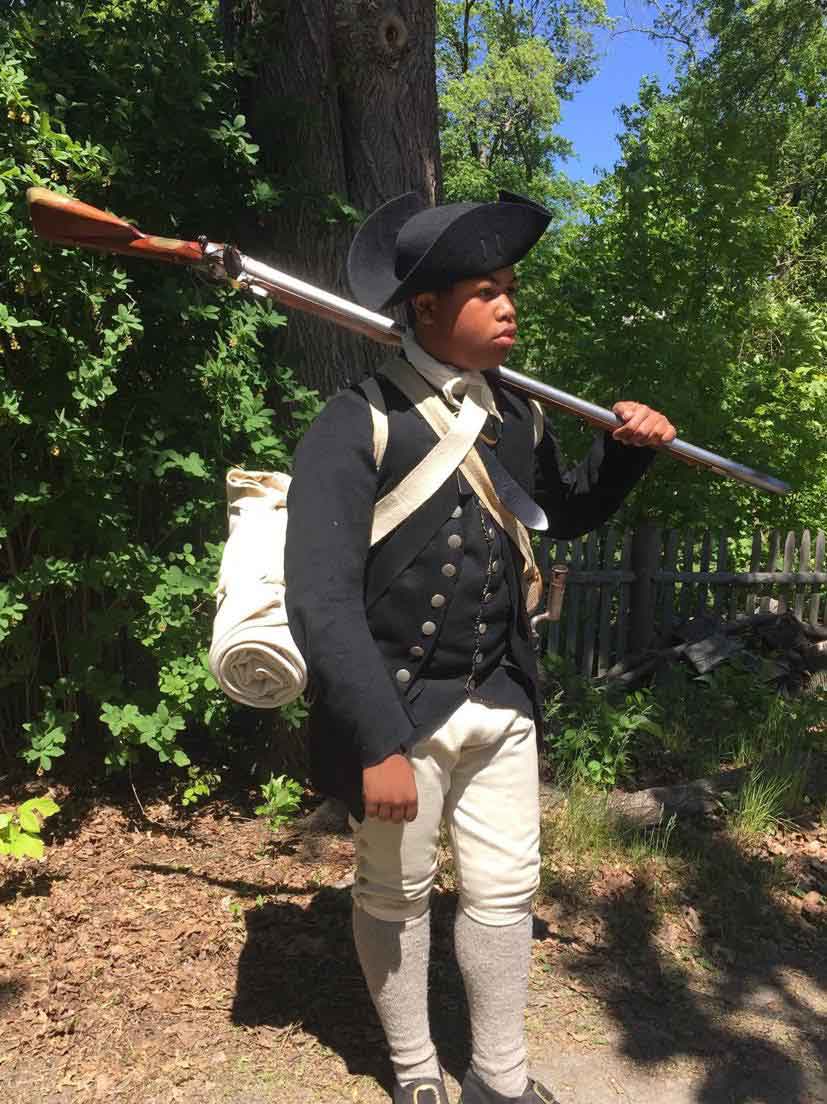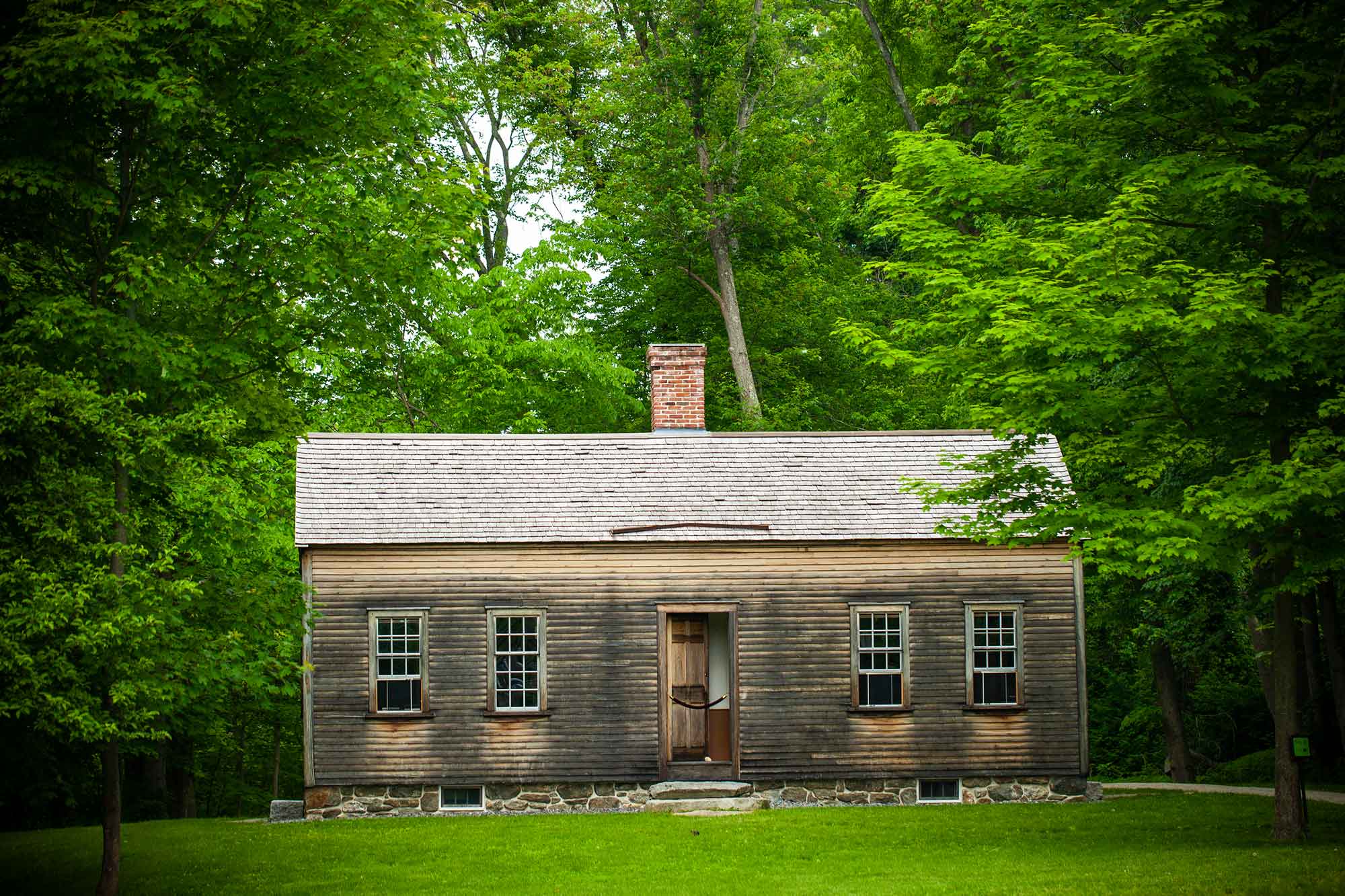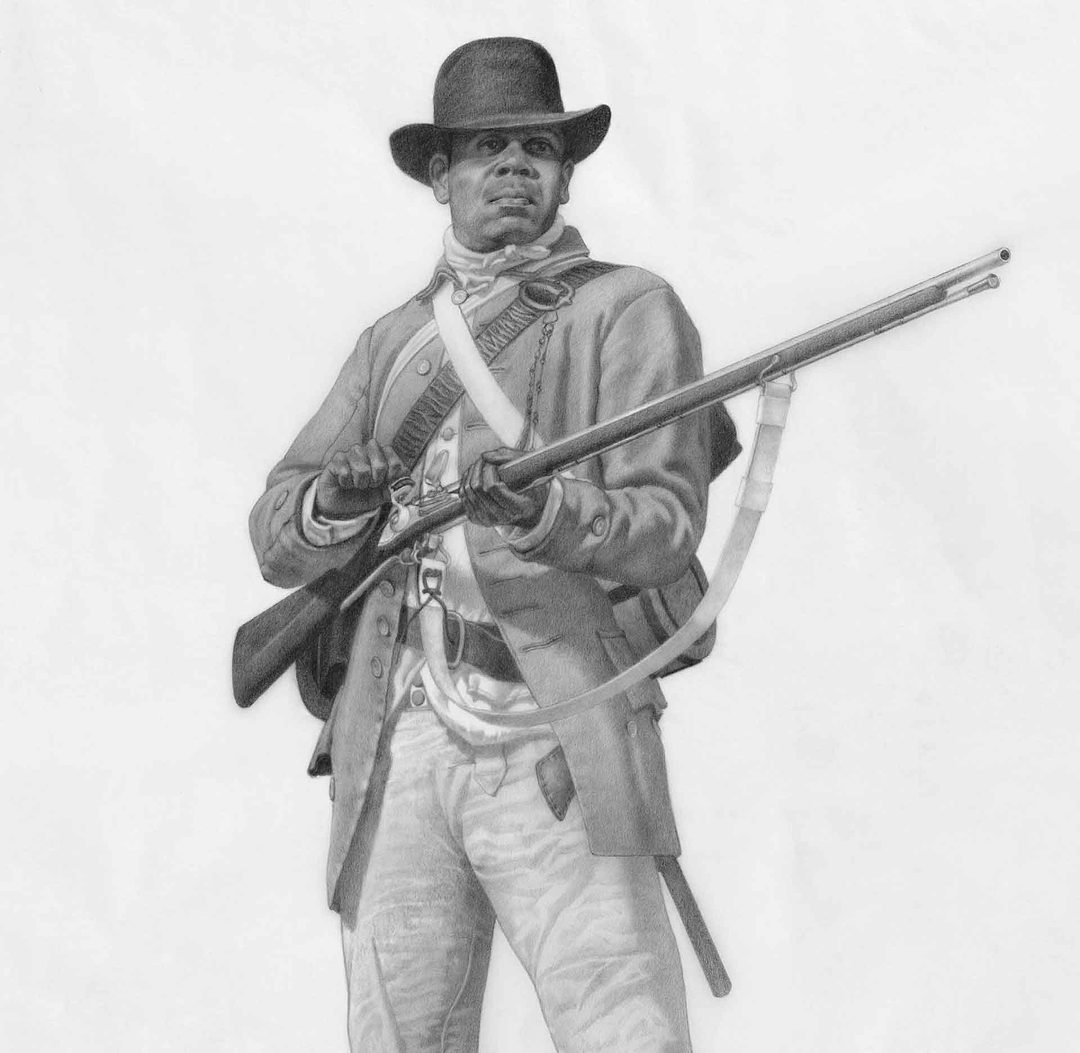 On April 19, 1775, an estimated twenty to forty colonists of African or Native American descent fought in the first battle of the American Revolution. On that historic day, those men, often termed “Patriots of Color,” joined approximately 4,000 other men fighting British Regular soldiers along the “Battle Road” from Concord to Boston. Over the last 250 years, racism and historical bias have effectively ignored or trivialized the contributions of those men and many other people of color in the historic struggle that produced the United States. To understand who the Patriots of Color were, how they contributed to the American Revolution, and why they chose to do so, we must examine their social context.
On April 19, 1775, an estimated twenty to forty colonists of African or Native American descent fought in the first battle of the American Revolution. On that historic day, those men, often termed “Patriots of Color,” joined approximately 4,000 other men fighting British Regular soldiers along the “Battle Road” from Concord to Boston. Over the last 250 years, racism and historical bias have effectively ignored or trivialized the contributions of those men and many other people of color in the historic struggle that produced the United States. To understand who the Patriots of Color were, how they contributed to the American Revolution, and why they chose to do so, we must examine their social context.
During the seventeenth and eighteenth centuries, slavery and racism were integral parts of colonial American society, relegating people of color to the lowest social classes. While the powerful were able to exert control over others, especially the enslaved, those at the bottom of the social order were forced into dependency, making life outside established institutions incredibly difficult. Slavery formed the backbone of the Massachusetts economy. From their tableware to their rum, the wealth and commodities of the slave trade touched every person in Concord.
By 1775, military service was also a routine aspect of life in Massachusetts. Since the seventeenth-century, militia laws required men meeting certain criteria to train for and turn out during times of war. By 1775, however, those militia laws barred Black and Indigenous men from training in town militia companies. While only white male citizens between the ages of 16 and 60 were required to participate in militia training, the law stated that all men between the ages of 16 and 60 must turn out during an alarm. Thus, when news spread on the evening of April 18, 1775, warning that British Regular soldiers were marching toward stockpiles of military supplies in Concord, many men of color turned out with Provincial (Patriot) forces to oppose the raid. Muster rolls do not record the names of any men of color who served for Concord on April 19, 1775, but some Black men likely volunteered, turned out by law, or were forced into service by their enslavers.

Living History Volunteer
Although barred from previous training, the men of color who fought on April 19, 1775, were the first of many to take up arms between 1775 and 1783. By the end of the Revolution, an estimated 6,600 African and Native American men served with Patriot forces while many more served with the British. Why would some men of color willingly choose to fight for a society that treated them as inferior? Some individuals saw the war as an opportunity to affirm their cultural agency or gain further influence with Anglo-American society. Some likely served due to fear of reprisal by those who favored separating from Britain. Still others considered life, liberty, and property to be a birthright of all British subjects. During this tumultuous period filled with talk of liberty and freedom, many questioned whether the practice of human enslavement was consistent with the ideals preached by Patriot leaders. African American militiaman Lemuel Haynes wrote in 1776, “I query, whether Liberty is so contracted a principle as to be Confin’d to any nation under Heaven; nay, I think it not hyperbolical to affirm, that Even an Affrican, has Equally as good a right to his Liberty in common with Englishmen.” Although Haynes did not witness combat on April 19, 1775, many others did. Men from communities like Framingham, Lexington, and Beford turned out - both willingly and unwillingly.
From the first shots on the Lexington Green to the “Shot Heard ’Round the World” in Concord, Black men were on the frontlines of battle. When British Regular soldiers attempted to disperse a small band of Lexington militia early that morning, gunfire erupted from an unknown source. As the Regulars opened fire, an enslaved man named Prince Estabrook received a musket ball wound in his left shoulder. Mere hours later, local narratives indicate a man named Caesar Jones, enslaved by 2nd Lt. Timothy Jones of Bedford, marched into battle at Concord’s North Bridge. As the British soldiers retreated along the Bay Road toward Boston that afternoon, thousands of militia poured into the battle, including more men of color. When the fighting reached Lexington for the second time that day, Caesar and John Ferrit, a father and son of Indigenous and African descent, arrived from Natick to join in the urban combat that raged through Menotomy (Arlington). Current estimates indicate approximately 20-40 men of color engaged in combat on April 19, 1775, although the number is likely much higher, as some were never paid for their service, and others marched in the alarm but did not arrive in time to fire their guns.
In the weeks, months, and days following the fighting along the Bay Road, thousands more men of color turned out for service in both the Provincial and British Armies. At Bunker Hill, scores rushed into combat, including many who had participated on April 19. When George Washington arrived from Virginia and created the Continental Army in July 1775, he barred Black and Indigenous Men from enlistment. Following strong petitions from numerous people of color and white soldiers in the Continental Army, together with a desperate need for more men, Washington reversed his decision and allowed free Black and Indigenous men to enlist.

The Robbins House
| ©istock.com/traveller1116When the war shifted south after the Siege of Boston in 1776, many communities in Massachusetts struggled to fulfill enlistment quotas. During this period, more men of color filled the ranks and acted as substitutes for wealthy white men called out by draft. During the later phases of the war, many men from Concord enlisted, including Philip Barrett, enslaved by Colonel James Barrett, and Brister Freeman enslaved by Dr. John Cuming. Some men of color from other communities enlisted for Concord as well. Sampson Yearney of Medford enlisted to fight for Concord and died in service on March 7, 1779. While some such as Freeman returned to Concord following the war, others like Barrett likely took the opportunity to self-emancipate. Service in the military did not guarantee freedom for those who enlisted while enslaved.
Through the determined work of the community of color, slavery gradually came to an end in Massachusetts during the 1780s. Unfortunately, the struggle for freedom across the United States continued for many decades. In many cases, the veterans of color who fought during the Revolution and their descendants led movements for the abolition of slavery, including the descendants of Concord resident and Revolutionary War veteran Caesar Robbins. In 1837, Robbins’ daughter, Susan Garrison, helped found the Concord Female Anti-Slavery Society. In 1866, Robbins’ granddaughter, Ellen Garrison, also stood up against racism in the Reconstruction South and worked to educate freed people.
As we approach the 250th anniversary of the American Revolution, dedicated research is restoring the narratives of Black and Indigenous people who participated in the American War for independence. By acknowledging the key roles they played in both its outcome and its aftermath, we form a more holistic view of the past that helps us navigate the present. The stories of those people who risked everything for freedom, equality, and justice help us shape our present views on these same topics.
For a full list of sources, please contact the author at MIMA_Info@nps.gov.


